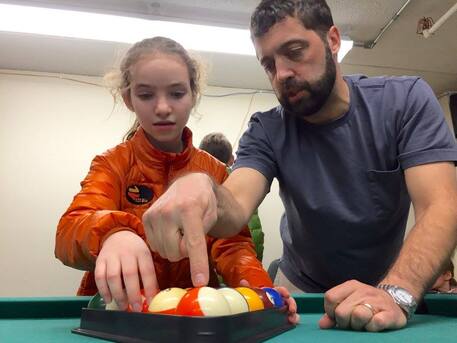 Here is an old pic of an elder teaching an important life skill at one of our annual ski trips. We are a community that plays together as well as worships together. It is OK that the line between the two is sometimes hard to find. Here is an old pic of an elder teaching an important life skill at one of our annual ski trips. We are a community that plays together as well as worships together. It is OK that the line between the two is sometimes hard to find. This blog is mostly about hiking. Other posts here are about gardening, music and tabletop roleplaying games. It is about "Sabbath Walks." By this I mean it is about finding ways to consciously involve the spiritual in what sustains us outside of the regular paths we occupy. It comes from an urge to find ways to form dialogues with the transcendent outside of what we think of as the "traditional" institutional ways. I think we often get lost when we try to do this alone. We want to have a spiritual life. We want that level of meaning in our lives. That, however, is hard to do. The topic isn't valued, after all. The sea we swim in every day is about money; who has it...who doesn't...how we make it...and how we make it for other people. The Man wants us to work until we think that is all there is. It wants us to identify with how we make money over the other facets of our lives. This makes that spiritual dialogue a challenge. Also, I maintain, the Man does not want us doing these things in a community of faith. This has left congregations with a choice. Synagogues, mosques, and churches can be either counter cultural (pointing to a richer identity for humanity that includes a just and inclusive vision of the future) or co-opted (keeping people docile and in the place "society" has chosen for them). I bring this up because I am a preacher by trade. Readers know this because I don't make it a secret. It is how I make my money and it is how I fight the Man. I am Team Counter Culture. However, I do not make church-stuff explicit here often because the co-opted faith is what most people know. I do not want my affiliations to get in the way of people's path here. People have ideas about religion; some gained by hard experience. I know that we can seem manipulative, judgmental, or just silly. However, I am trying hard not to be any of those things. I want what I write and talk about at Sabbath Walks to be taken seriously with openness as much as it can be. All this is to say that I am breaking my rule--for a moment--to share this sermon about worship in the church. This year I am off and on sabbatical and so is the church. We are thinking about what we can do to adjust to the post-modern world around us. To this end the Eliot Church, which I serve, asked for a prose copy of this sermon about a very churchy topic. If it is your bag please take a moment to read it. I will post some links at the end for further context. If you aren't into it, then you can move on judgement-free. The Quiet Mystery Rev. Adam Tierney-Eliot February 12, 2023 With certitude Simeon opened ancient arms to infant light Decades before the cross, the tomb and the new life –Denise Levertov So, it turns out that human beings haven’t really changed all that much over the centuries. We still find our inspiration both inside and outside the temple of tradition. In our reading today from Luke Chapter 2, Mary and Joseph took Jesus to the temple in Jerusalem; the holiest of holy places in their world. They took him there for the rituals of purification for Mary and circumcision for Jesus. They brought two turtledoves with them as an offering, just like in the famous Christmas carol. However, before they could make the offering, Simeon and Anna–Important religious figures in their own right; folk prophets, if you will–do a bit of an end run around the religious authorities. They provide their own blessings for the child Then…Mary and Joseph still head inside to make it “official” In spite of all they had witnessed–The angels, Zechariah being struck mute, the star in the sky summoning the magi, the shepherds' amazing stories, and even the presence of these two freelancers on the temple grounds–in spite of all the assurances that their child was unique and special, they still swung in to get the blessing done by the priests on duty before heading back to Nazareth. Perhaps cousin Zechariah himself was there performing the priestly duties, we don’t know. Now, this phenomenon still happens from time to time. It even happens in our small “low protestant” church. We get inquiries for weddings. We get requests for baptisms and child dedications, too. We host or perform memorial services both here and by the grave for good people who do not claim to "believe" whatever it is they perceive us as believing. Now, they are usually wrong about what we stand for. The truth is, they don't really care all that much, anyway because they are not looking for community in the long term. However, they are looking for meaning…in our church. At least in the one specific instance that brought them to us; the specific instance of birth or death or marriage. They come to us because the Eliot Church building is a place that tradition has set aside for finding that meaning. They are not seeking a church nor a congregation. They all, though, seeking…a temple. 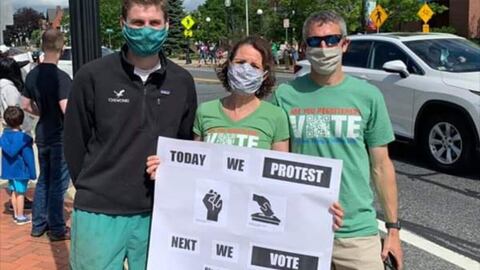 Our worship in the sanctuary sustains us in our action outside it. Our worship in the sanctuary sustains us in our action outside it. Now these days we get fewer of those people visiting, and there are reasons for that, some of them are even good reasons. Still, the urge is out there. There is something in the human mind that seeks a place with sacred connection. Sometimes--as we have discussed before-- that place is out in the world somewhere. However, sometimes, it is right here where we still gather on the morning of the sabbath day. You see, the thing that congregations still do best–better than anyone else–is create a ritual landscape that carries meaning on a communal rather than an individual level. This is what the temple seekers who visit us are looking for. When human beings are seeking a place to gather in their own community (whatever that may be) for the spiritual work of community–of formally witnessing life's passages–people are drawn back to the temple that our congregation inhabits and maintains for at least that one moment. At the very beginning of this service I read a passage from Presbyterian minister Richard Dietrich, "How do we express reverence? We create communal responses in order to offer our awe...we create rituals around the seasons of the year, around the seasons of life: birth, coming of age, growing old, dying. We create things" and then we are loyal to them." People still get married in and buried out of churches, synagogues and mosques. These are places created by their predecessors. They dedicate their children even if they are not sure what they are dedicating them to. Now, they also receive the meaningful and unconventional blessings of families and self-appointed prophets. In fact, “in house” in our congregation we offer a lot of those blessings ourselves. We bless each other in non-official ways. If Simeon and Anna were alive today, after all, they would still be part of a congregation and great people regularly on the temple steps. All this means that the urge to worship more formally still exists–and it means a full house on Christmas Eve–but what we are doing right now doesn't have the draw it used to. Regular sabbath morning worship doesn’t have the draw anywhere like it used to. The problem, I think, is that for consistent participation and communal belonging as Human beings, we need to see ourselves–our lives and our understanding of the world–in the sabbath moment. We need this in both the old ways and the new ways. 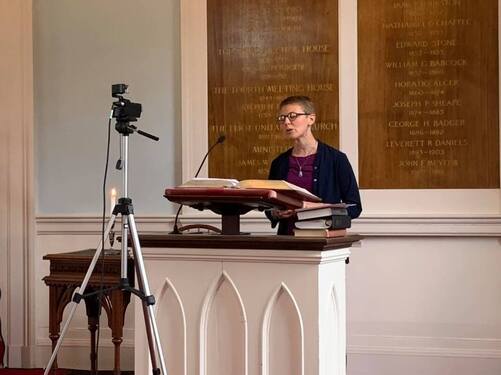 We did a great deal to stay together during Covid. Maybe there is something we learned about ourselves that can help us with the challenge now. We did a great deal to stay together during Covid. Maybe there is something we learned about ourselves that can help us with the challenge now. This is where we have that problem of perception. For while–as the Eliot Church–we do see ourselves in both worlds, I think it is safe to say that in certain quarters of our society what we do on Sunday morning can be considered a bit…unfashionable, unproductive…and Quaint. Of course we know this for we also spend most of our time living in the present with its pressures, needs and biases. This old stuff from the past that looks to the future can feel like a waste of time when there isn’t some “temple need” on the horizon. Why, after all, would a rational human being want to sit in a room for an hour to sing hymns, hear some poetry and listen to someone talk about it? We do not receive any gifts of productivity by being here. The era of the church as a networking site is long gone. There are more convenient ways to hang out with each other. However, most of us here do this regularly...and we miss it when we can’t. Of course we also know that the answer to these questions is in the questions themselves. We are drawn to the hymns and the prayers and the poetry. We even appreciate that perceived inconvenience which pulls us from the rat-race for a moment that sets our sabbath intention. Each week we look around the sanctuary at people who do not mind stating with their presence that they, too, appreciate these things. To be drawn to the temple for more than the holidays and major observances is to make the big picture a priority; to ground ourselves in the tested structures of the past. We talked about this last week. To be in the temple is to prepare for…whatever comes next in our lives. We worship together in this place in order to experience the spirit in the quiet of our hearts. Also we worship in this space together for no less a task than to share the inner motions of our souls; to feel the call of the Divine in the thoughts and actions of fellow inhabitants of creation. Jacob Trapp tells us that "To worship is to stand in awe under a heaven of stars, before a flower, a leaf in sunlight, or a grain of sand...it is an inarticulate silence yearning to speak. It is the window of the moment open to the sky of the eternal.” That is what draws us here and that is what compels us; to create a style and opportunities for worship that reflect not just where we have been and not just where we are now but also the world we want to bring into reality. So now, in our shared sabbatical year, maybe we need to take some time to work on the way we worship. Maybe we need to ask ourselves how we are achieving this balance. Like Mary and Joseph we understand the importance of those old foundations in the new thing that is beginning. This doesn’t mean doing anything rash, for timeless ritual–those abstract conversations and perceived inconveniences; that amateur singing and timely reflection–is what draws us here and draws those others who occasionally darken our doors. However, what we do need to do is think about inclusion; from where we place the coffee pot to how we preach, pray and sing. People need to see new words and ideas in the old forms and a wider variety of faces in the front of the sanctuary. They need to be met where they are, not commanded to conform to the pressures and perspectives of the past. In our lives outside these walls we are post-modern. We adapt to the context we live in and find ways to welcome the new, to accept and love people for who they are. Yet the church still can appear to be rigid and unresponsive to those changes. How do we find ways to reflect our adaptability? 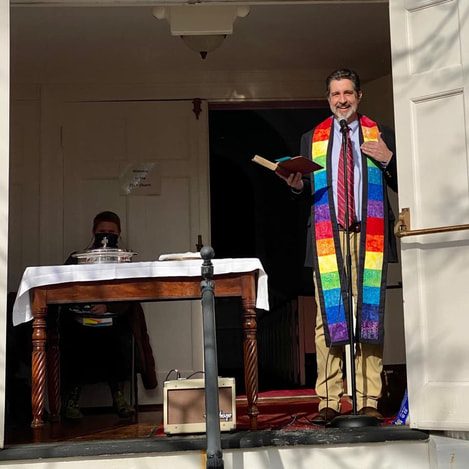 We found ways to keep tradition--like monthly communion--even when we could not worship indoors and in person. We found ways to keep tradition--like monthly communion--even when we could not worship indoors and in person. This sabbatical year is a good time to experiment with these things. In fact, we have already started. There are lay readers and guest preachers who change the sound and look of who we think a worship leader can be. We have experimented a little with different forms and rituals, too. Still..there is more to do. As you know, I am a big fan of inclusive language, for example. During my time away from leading worship I will be looking at some of the words we still use in this place. How can we broaden the Lord’s Prayer so that everyone can see themselves in God? How can we find and sing hymns that speak to our own experience? How can we pray our prayers, responsive or otherwise in a way that reflects our own broad theology? We must also ask how we include people whose busy lives do not fit the time or form of Sunday morning. We are not going to “win” a battle against youth sports and family ski trips. People are busy. They feel the pressures of the lives they–we–have fallen into and a change of lifestyle or schedule that frees up Sunday morning is too much to ask for a first step. Our job is not to close doors through our perceived judgment and disappointment–and that is how many see it–but instead to open doors that they can find their way to enter. Therefore, we will be thinking once again about Dinner Church, Sabbath Walks, and Pub Theology. We need to find a path for ourselves to understand that these are not “add-ons” we do as well as worship, but forms of worship themselves. Denise Levertov, in her poem Primary Wonder, writes about being burdened by the worries and cares of the world. However she ends saying, “And then once more the quiet mystery is present to me, the throng’s clamor recedes; the mystery that there is anything, anything at all, let alone cosmos, joy, memory, everything rather than void.” In this post-modern world we need to find ways to make steps into the temple that are easy to access for those who come after. If we do this, then they, too can feel the mystery that we have come to experience in our own lives. So let us take a moment in silence now to think about those steps Let us consider where they make us stumble and where they make us dance. So... promised some links. Here is this sermon in the form of a podcast.
This sermon worked of the previous one. Here is the podcast for "The Church is Dying...and Being Reborn"
0 Comments
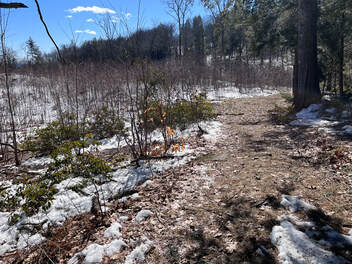 The hike over to Massaemett wasn't entirely covered in snow. There were areas where the sun had done its work! The hike over to Massaemett wasn't entirely covered in snow. There were areas where the sun had done its work! Hiked on February 14, 2023 This was a spontaneous hike. Thursday's weather looked hideous as usual and I wanted to see the sun! I decided, therefore, to hit Route 2 and head over to the High Ledges Audubon Wildlife Sanctuary on a Tuesday to catch the view. I had been saving it for a perfect day...and this was pretty close. The loop I chose was around 5 miles and featured an undulating landscape with a small mountain, a fire tower, a valley, and some hills. The snow was fairly compact to start and then it got loose as the air warmed it up. This made footing a bit of a challenge...and I brought out the micro spikes. I could use the workout though. There has been quite a bit going on. The church is wrestling with some big questions. Finally, I have a few weeks of sabbatical starting soon. I will give thought to the church's questions then and add in a few of my own....  Another view from the fire tower. It looked a bit like a prison on the inside but to look out was fantastic... Another view from the fire tower. It looked a bit like a prison on the inside but to look out was fantastic... Lately I have been thinking about life-changing moments. Specifically those times when we make a decision to leap into the abyss and become a miniature or occasional "knight of faith" in the old formula of Kierkegaard. There are times when our lives change because of something that happened to us. However, when we are able to exercise of free will, our moments of decision change the trajectory of who we are, how we are perceived, and maybe who other people are around us. These decisions aren't always drastic. This is a good thing. People can wait their whole lives and miss the turning points if they believe that our choices only come in large sizes. Sometimes we hardly notice them at the time. Either way we make them, don't we? They are the beats of our lives. Looking back they are the decisions we mark to say that life was different afterward...in some way large or small. I remember deciding to become a minister at the foot of Doubletop Mountain in Maine when I was 19. It wasn't momentous at the time but there I was...and here I am. I just went for a walk in the evening and decided that--given my interests and my emerging skill set--the parish and I would be good for each other. My ministry outlived the campsite we stayed at. It seems to be a much bigger deal now. A short time later I met my future wife at a meeting of college activists. In an uncharacteristic fit of optimism, I thought I would like to get to know her better. Turns out I didn't make much of an impression on her at the time...but here we are three decades later. There are decisions that change our lives in smaller but still-lasting ways. I remember the first time I played the ukulele in the middle of a sermon. Everybody was surprised. These days--many music ministries later--it isn't a big deal anymore. The same can be said for Dungeons and Dragons Club and the "Snow Posse" (sidewalk shoveling) youth group events that grew into something for a few years then seemingly faded away. Those youth are grown up now and some keep in touch. I am always pathetically happy to see them when I can. Two of the gamers now help me teach their parents in "adult" D&D. Maybe it didn't fade after all. Each of these decisions and many others started small and even commonplace. What grew out of them was a life. I feel like there will be a few more decisions like that soon. Maybe I will make them. Maybe someone else will. Right now with the church it feels like many, many big decisions are coming down the line. However, it will be the small ones that lead to another and another that will determine our future. 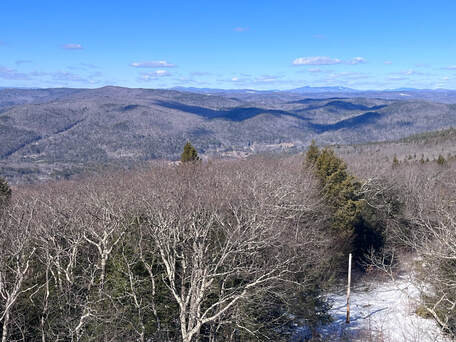 Looking down from the tower toward the trail which runs by the telephone pole. Looking down from the tower toward the trail which runs by the telephone pole. I say all this now because hikes like this are a series of small decisions. This week on a Tuesday I decided to get up and get going. I decided where to go. There were all kinds of micro decisions that helped me to focus on the day. How would I get there? Would I do both the out-and-back to the tower or just the ledges themselves? Was this a good use of my time? How would I deal with the vagaries of weather? Also, on this trip, I decided to do some more extensive filming. It has been a while. Many of you are aware of my interest in 21st century communication. This weblog is part of that. My podcasts are as well. For a long time I was into making youtube videos of sermons, church news, meditations, music and--during the plague--entire worship services. Sometimes this meant collaboration. At other times I worked on them by myself. I got into it through a series of small decisions that brought me joy. A series of small decisions may bring me back...or maybe they come to nothing. It is too early to tell. If we use the model of "Sabbath Walks" that I write and talk about here and elsewhere, all of these endeavors--these choices made and sometime pursued--fall into the category or "frame" of dialogue or creativity. On this hike, for example, the choice to film meant stopping and starting; recording sections of trail, talking to the camera while imagining future viewers, editing after getting home while re-living the excursion, and improvising a soundtrack. I had to make decisions about equipment. If I keep doing this there will be more decisions to make as some things may need replacing. There are many little steps. After all to even get to the point of recording there was research. There were skills that could use some improvement through repetition. That said, I am learning. While this decision may not lead to anything more, it just might...probably in surprising ways. After all, nobody thought the skills I learned from my "hobby" would help hold online worship together during the early months of Covid. Ultimately we found somebody more skilled. Of course, nobody thought that the skilled person we found would be a beloved former member of the D&D Club and the Snow Posse who had moved away. Decisions keep on rippling out, don't they? Anyway, I have included the video. I think it is pretty good for a first attempt! I also started a Sabbath Walks YouTube page that you can subscribe to to get notifications. Just click on the video above and hit "subscribe." I may decide make more of these moving pictures. We shall see. Both I and the church are looking for ways to communicate. Perhaps this is the way. Here is to your decisions and dialogues. I hope you have found something to bring the sabbath "walk" to life regardless of what it is or how you go about it. Many blessings on your travels until next time. I will see you out on the trail. Hiked on February 2, 2023 Somewhere along the way of this project, it appears that at least a few people got the impression that I am particularly rugged or outdoorsy. I am not of course. I am just a suburban dad transitioning to empty-nester with a bad back and sore knees. I prefer a room and a bed--preferably my own--to a tent or sleeping platform. It is just that I find the Transcendent in nature, and that helps get me through the week. I have been doing some workshops on Sabbath Walks. I have been pitching them as "mindful walking" workshops because the word "sabbath" appears to make some folk uncomfortable. Maybe it is because "sabbath" is a religion-word. I like it better, though, "mindful" is way too broad. Anyway, It is at these events--and the conversation around them--that I have noticed this disconnect. People will come up me to say it is all very interesting...but they cannot go on a big hike. Usually this is for physical reasons, which I totally get. The only issue is that I am not talking about hiking. I am talking about walking and even that has more to do with sitting. The process is all about perspective and intention. Are you paying attention to the world around you? Are you letting your experience influence your understanding through reflecting on your context? Then you are more than good. 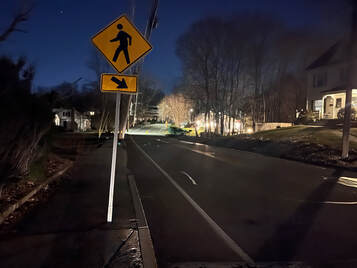 A glimpse of a night walk through my town. The whole place feels different in the dark. A glimpse of a night walk through my town. The whole place feels different in the dark. Actually I haven't gone on many big hikes lately. Work has gotten in the way. So has the weather. I do get out every week but all of my Sabbath Walks in 2023 have been in Massachusetts. It is a good thing that we have so many great opportunities to get out in nature here! Yes, it will be hard to cultivate "likes" in the same way when the views are less dramatic and the physical effort may also be. That said, I have enjoyed immersing myself in the land close to home. Some of the best hikes lately have been repeats. I trundled up Mount Watatic again and again. The Graces and the Crow Hill Ledges still stand out. One of the best walks I had was my usual four-mile round-trip stroll downtown...but at night. This made all the difference. What I really want to talk to you about though, is the Assabet River Wildlife Refuge. 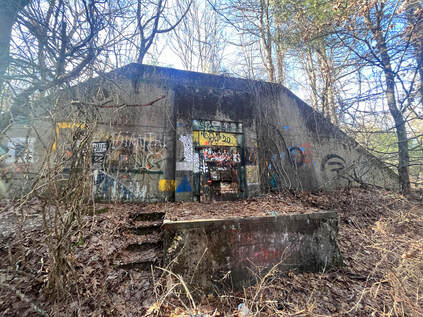 The bunkers off the main trail were covered in graffiti. Obviously they had been re-purposed as hangout spaces for people who wanted to get away. The bunkers off the main trail were covered in graffiti. Obviously they had been re-purposed as hangout spaces for people who wanted to get away. I have to say that I only recently really clued into its existence. I went over there because the weather in New Hampshire was turning dangerous and I also had the need to find something more accessible for a group Sabbath Walk in the spring. As I mentioned earlier, people think that these walks need to be challenging. They do not. I was--and am--searching for places where a person could walk a few feet to find a pretty place to sit. If they wished, they could move on for a more challenging workout...but they wouldn't have to. When you are in a group you need both "easyish" and "hardish" options, so everybody gets what they want or need. Now, on this hike I had expected to see wildlife...and I did. What was surprising, though, was the large amount of evidence of previous human habitation! Many of the trails were unusually wide and there were patches of old, cracked pavement in places. Also, right where I parked was the foundation of an old tavern dating back to 1700. However, the most remarkable thing was the proliferation of immense concrete bunkers tucked away in the forest. Each had a massive metal door that was barred and locked like some dystopian Hobbit hole. Since my trip I heard from friends who had been in one. The description seems to fit as they appear bigger on the inside. The one they visited was vast, cold, and oppressive. 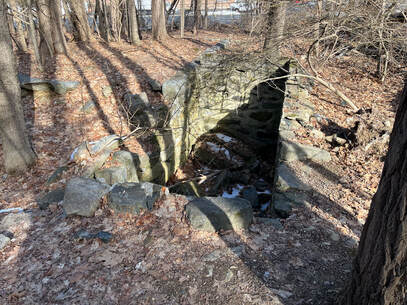 The foundation of the Rice Tavern. Erected in 1700, turned into a house later, and torn down in 1945. The foundation of the Rice Tavern. Erected in 1700, turned into a house later, and torn down in 1945. Now, I later learned that there were 50 of these bunkers in the park. Therein lies a story. First, of course, this land was wilderness. Then it was occupied by native Americans. Then, as Europeans came to this continent, it was a neighborhood for a long time. That is where the old tavern came in. Later Henry David Thoreau would pass through to visit friends. In fact, it stayed a agricultural community until 1942. Then, as the Second World War heated up, the land was seized by eminent domain. The people were moved. There were about 100 of them and they claim their compensation was 10 cents on the dollar. Their houses and the tavern were destroyed. In their place were those big bunkers, to store ammunition for Fort Devens. After a while this annex was sealed off and abandoned. Finally, in 2005, it was opened to the public. When I told this story in church and asked if anyone had been there only my eldest son raised his hand. His high school cross-country team ran there. Otherwise it is a new park to pretty much everyone I know. 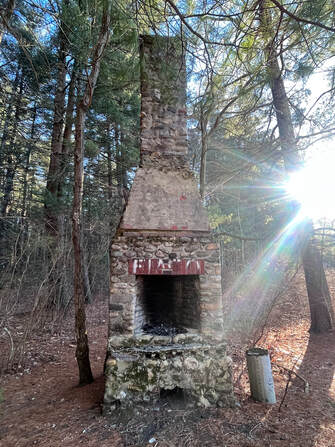 I found this near a fishing pier. I found this near a fishing pier. As you walk along its trails today there is all this evidence of the past. There are so many layers of humanity. Some of those layers tell peaceful stories of life lived in the usual ways. Others tell stories of fear, displacement, and violence. Now, the story of this refuge can be read as a parable. With any good parable we have choices to make about how we approach it and where we see ourselves in it. We can imagine ourselves in the position of The Native Americans, or the early colonists, or the neighborhood right before the war...all of them swept away. Perhaps instead we could see with the eyes of those massive bunkers stubbornly demanding our place in the midst of the wilderness. They are solid, powerful, obnoxious even…but largely irrelevant to the world moving around them. Or…we could see ourselves in the refuge, itself; adapting to our current context to serve current needs and connecting to the ecosystem that sustains us. Whatever we choose--and at times we have probably felt ourselves in all these categories with more besides--this walk reminds us of the fullness of time and the power of creation to alter our understanding of what "truth" is. It is a thoughtful place for a walk, or a sit, or a stand. I spent a couple of hours there. Then I went to a bar and wrote the beginnings of a sermon--here is the podcast version--with this story as its inspiration. That is what is supposed to happen on a sabbath walk. There should be a physical and mental challenge, then a new insight gained and a dialogue created. We make sense of our reality through reflection, after all. \My step counter says I walked 8.5 miles and there was much more to explore. I will definitely be back there soon. 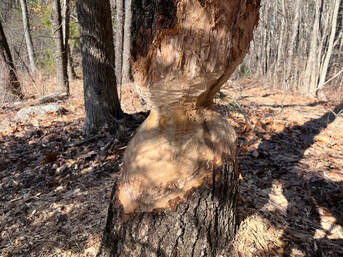 Thoreau actually wrote a poem about travelling though this area. The Old Marlborough Road exists as a road outside the preserve, but inside it continues as a perimeter road to the park. I hiked it. It was mostly quiet, with a few strollers and fat bikers. Anyway...here is the poem. It isn't necessarily one of his best, but it helps to give life to the people who used to live there. Also the page describes the area a bit. In my sermon I said the refuge is in Sudbury and Wayland. Of course it is actually in Sudbury and Maynard. After twenty years living here my geographical references are still those of a Mainer. By way of reparation, the link is to a Maynard historical site. Update: I finally got around to making a video of my most recent hike here. So if you are interested...here it is! |
Adam Tierney-EliotI am a full-time pastor in a small, progressive church in Massachusetts. This blog is about the non-church things I do to find spiritual sustenance. Archives
June 2024
Categories
All
|
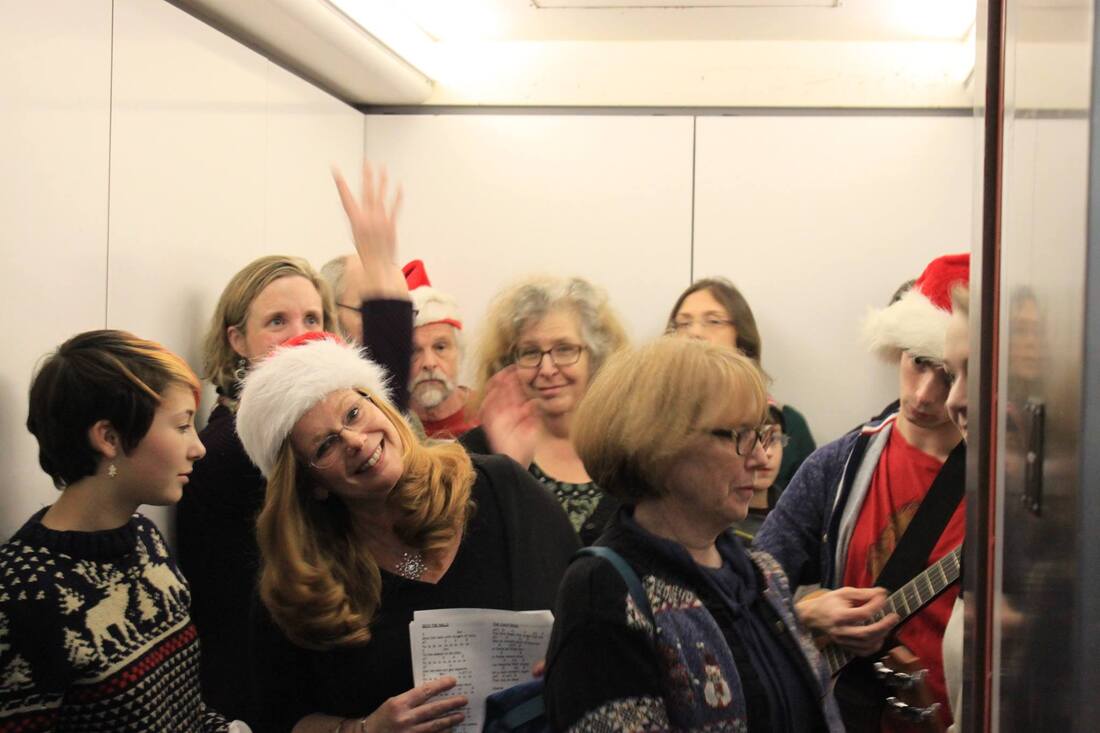

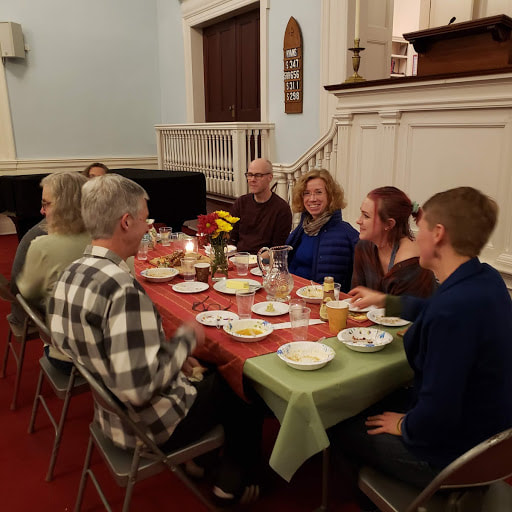
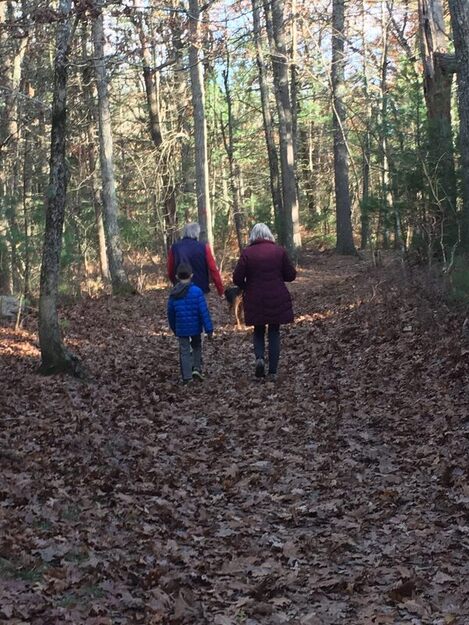
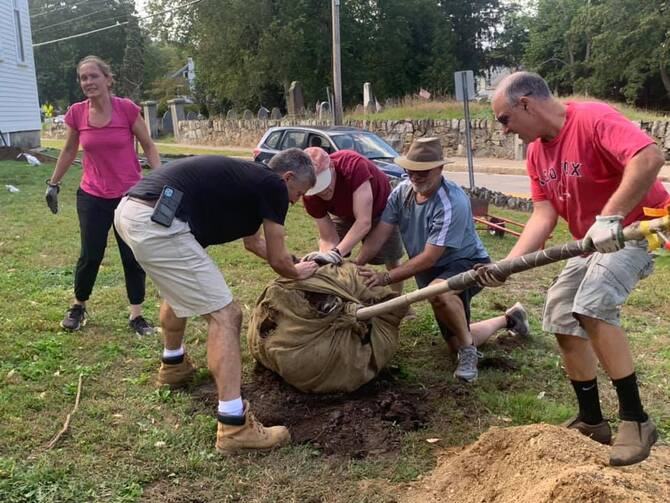
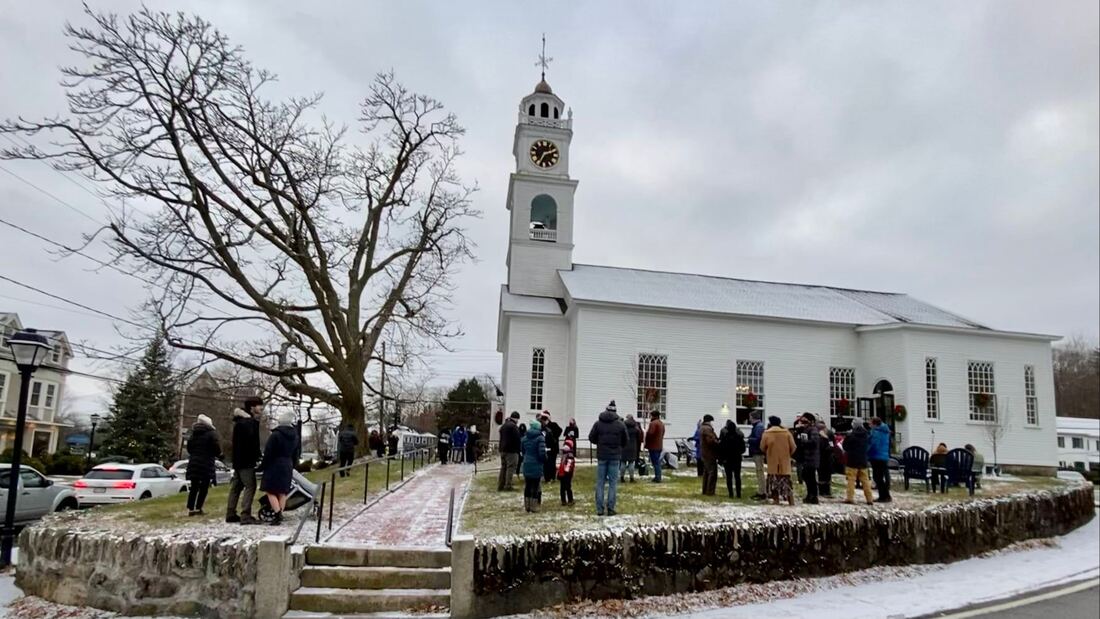
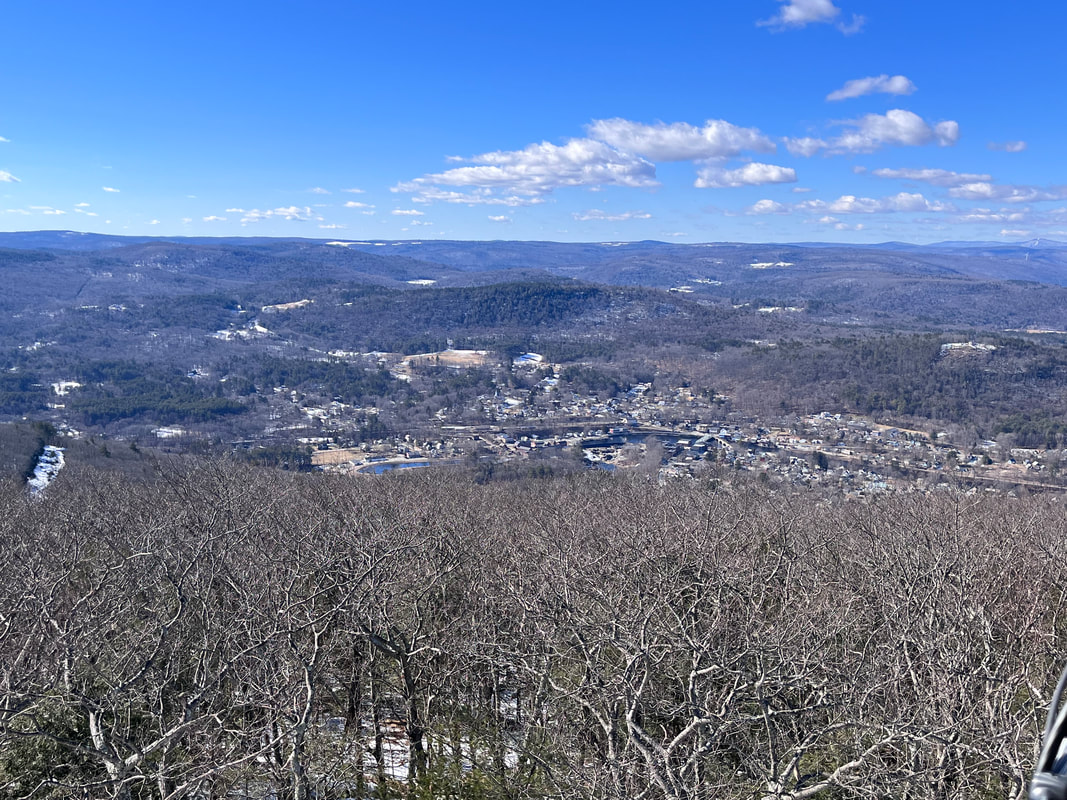
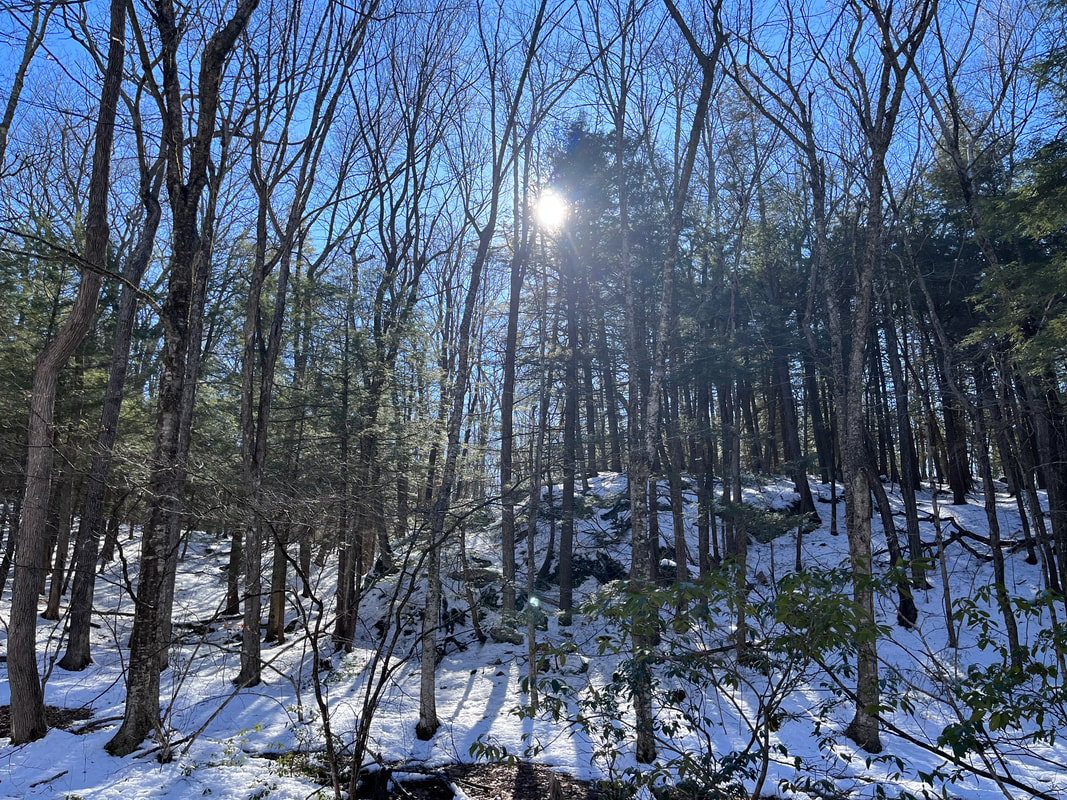
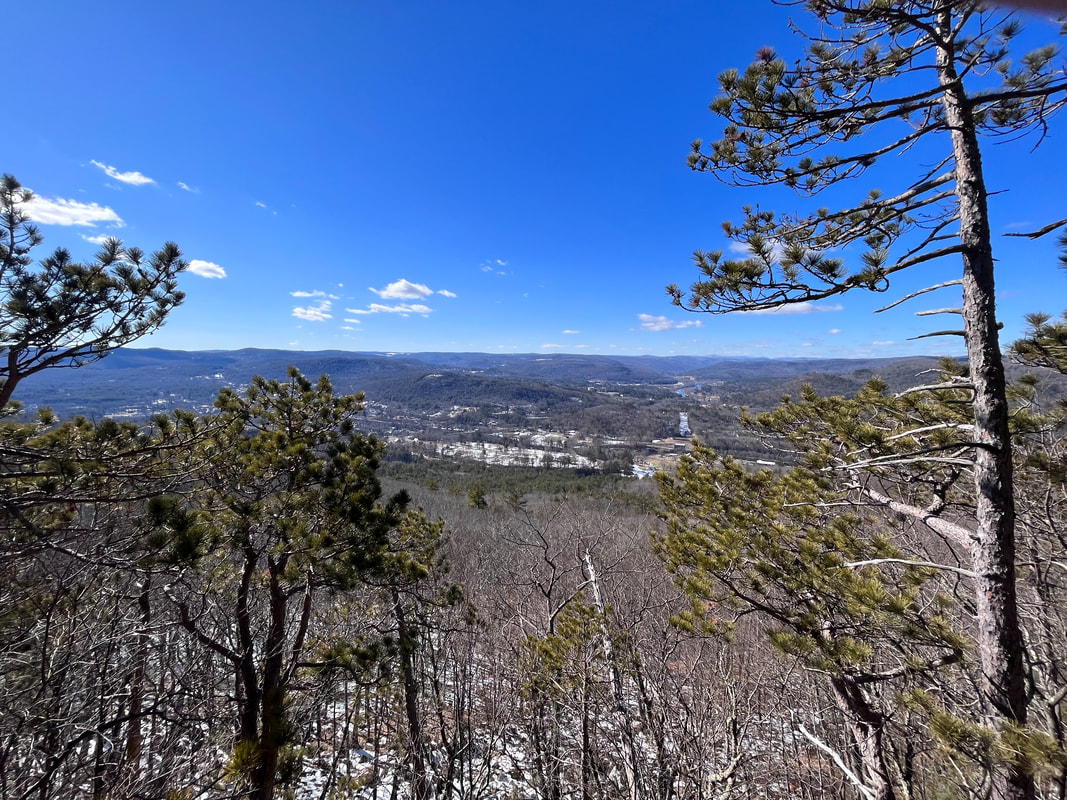
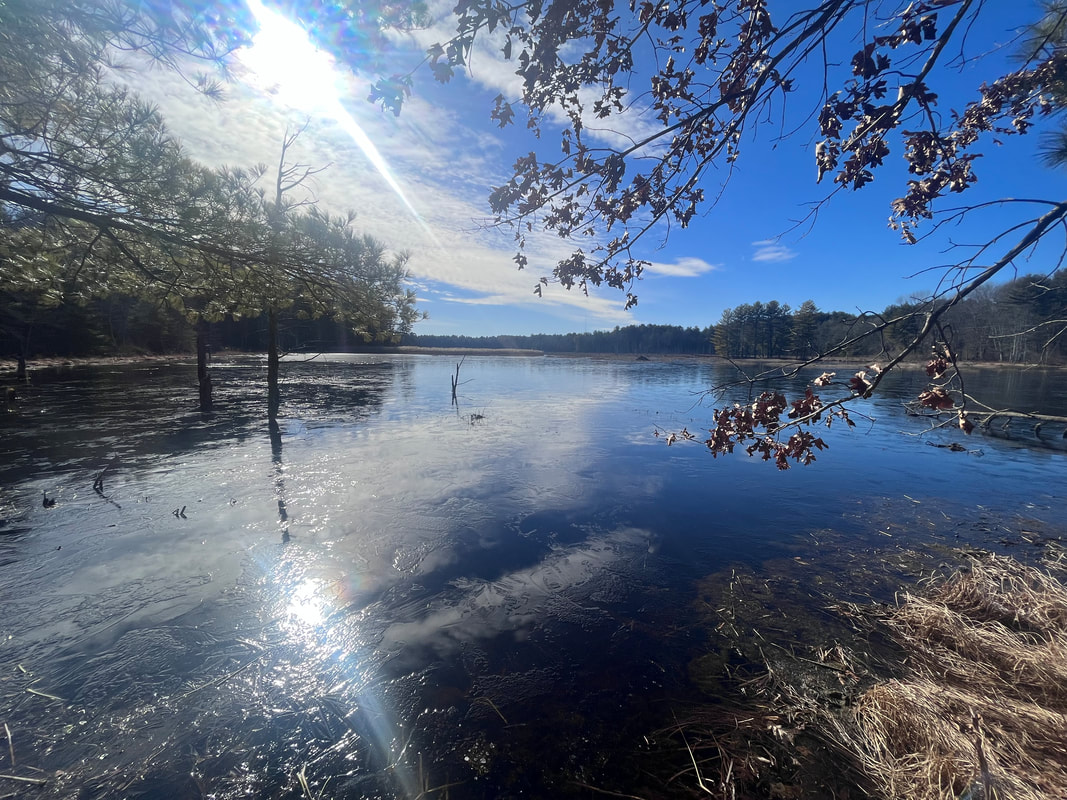

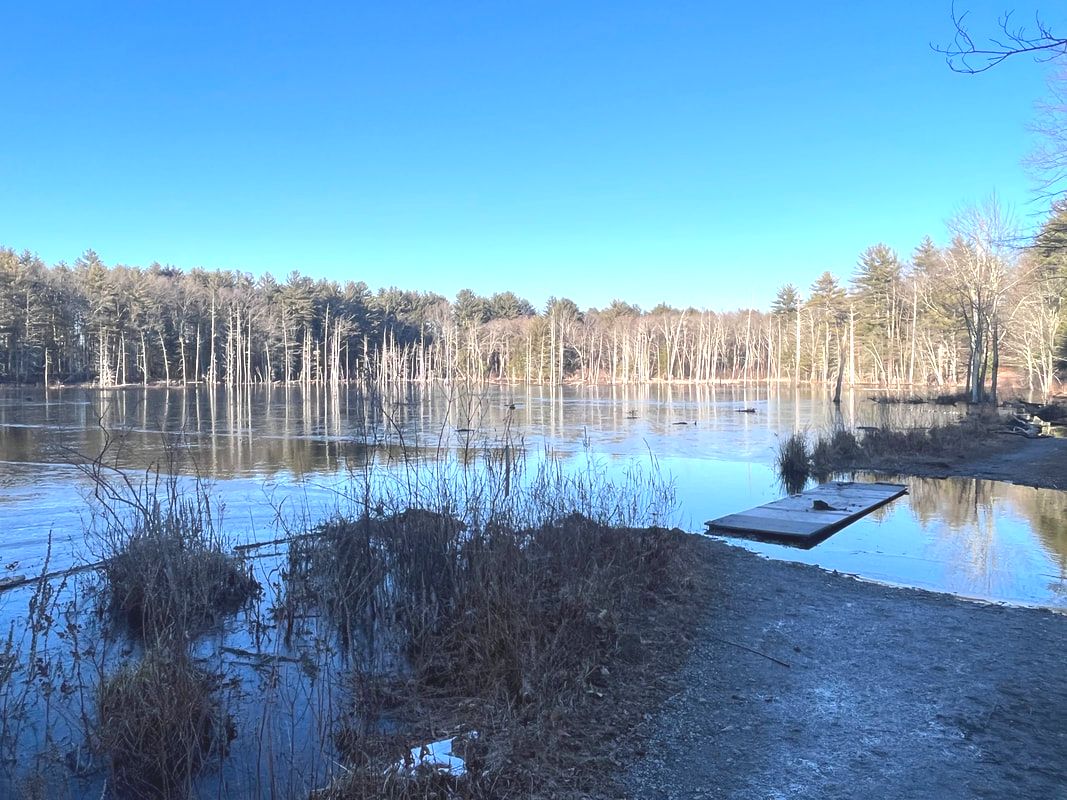
 RSS Feed
RSS Feed